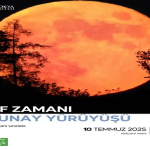Khánh Nguyen tarafından kaleme alınan bu makale, Ali Smith’in Autumn (2016) ve Richard Powers’ın The Overstory (2018) adlı eserlerinde ağaç-zamanı kavramının nasıl temsil edildiğini ve bu temsilin insan-doğa ilişkilerine yönelik etik ve ekolojik düşünceye katkısını incelemektedir. Makale, Cappadocia Journal of Environmental Humanities (Ecocene) dergisinde yayımlanmıştır.
Bu makale, ağaç-zamanının doğasını ve bunun Ali Smith’in Autumn (2016) ve Richard Powers’ın The Overstory (2018) adlı eserlerinde nasıl temsil edildiğini incelemektedir. Yazar, ağaçların zamana ilişkin algılarının insanlardan farklı olduğu ve bu zamansal ötekilikle kurulan duyarlı ilişkilerin, insan-dışı dünyayla sorumlu ilişkiler kurmak için gerekli olduğunu savunmaktadır. Autumn ve The Overstory, insan-ağaç karşılaşmalarında zamanın ötekiliğini sahneleyerek ekolojik farkındalığı teşvik etmektedir. Smith’in romanı zamanın döngüsel doğasını vurgularken, onun heteronomluğunu öne çıkarır. Powers ise, ağaçların uzun süreli, çizgisel zamansallığını temsil etmenin zorluklarını ele alarak, insan-merkezli zaman anlayışlarını sorgulayan bir örnek sunar. Her iki yazarın zamanın ötekiliğiyle kurduğu ilişki, doğa-insan ilişkilerine dair ideolojik olarak sorgulayıcı bir yaklaşımı da beraberinde getirir. Autumn’da temsil edilen döngüsel zaman anlayışı, modern öncesi, kapitalizm öncesi bir zaman anlayışını hatırlatarak, insan ile doğa arasındaki bağı görünür kılar.
Bu yayının orijinali İngilizce olarak hazırlanmıştır. Makalenin tam metnine erişmek için tıklayınız.
Nguyen, K. (2022). “Trees of Our Times: Representing Arboreal Temporalities in Ali Smith’s Autumn and Richard Powers’ The Overstory.” Makale: Ecocene: Cappadocia Journal of Environmental Humanities, Cilt: 3, Sayı: 1, ss. 29–40.

























